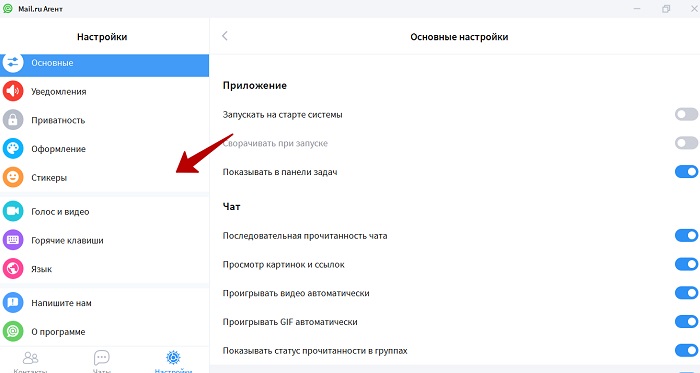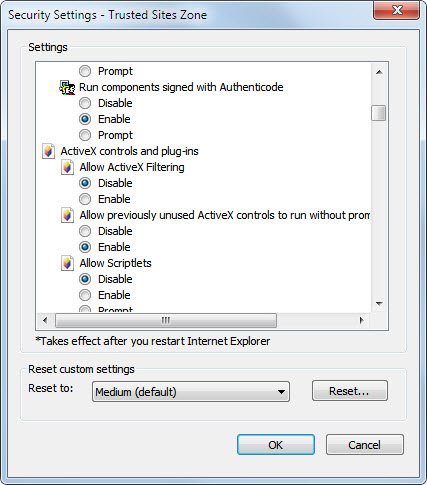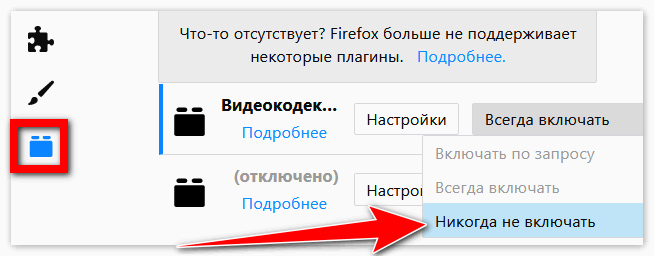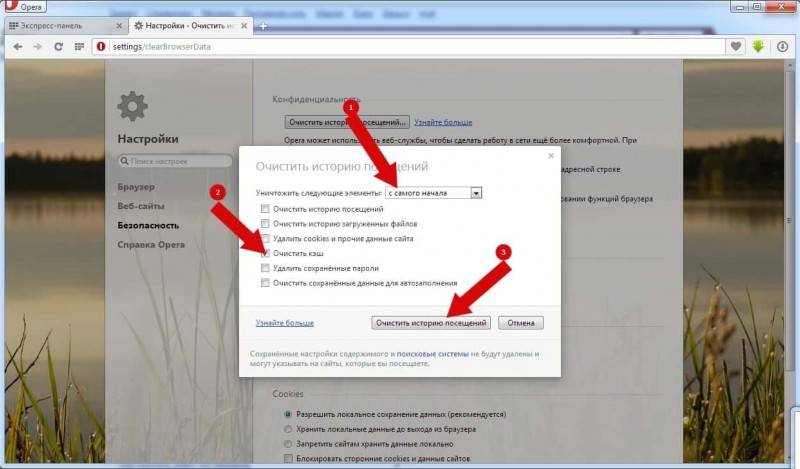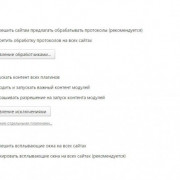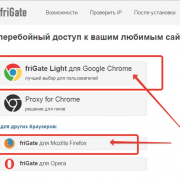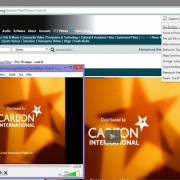Что такое user agent и как его сменить в браузере
Содержание:
- General form
- Other Gecko-based browsers
- Other Gecko-based browsers
- General form
- Cadena del Agente de usuario de Firefox
- Browser compatibility
- Considerations before using browser detection
- Firefox の UA 文字列
- Список различных user agent
- Firefox UA 字串
- Firefox UA string
- Firefox UA string
- Как отключить User Agent в браузерах
- Firefox UA string
- Firefox OS
- What It Does Not Do
- Focus for Android
- 瀏覽器相容性
- Использование
- Compatibilidade de navegador
- Для чего может понадобится изменить User-Agent
- Инструкция
General form
The UA string of Firefox itself is broken down into four components:
- is the general token that says the browser is Mozilla compatible, and is common to almost every browser today.
-
describes the native platform the browser is running on (e.g. Windows, Mac, Linux or Android), and whether or not it’s a mobile phone. Firefox OS phones simply say «»; the web is the platform. Note that can consist of multiple «; «-separated tokens. See below for further details and examples.
Though fixed in Firefox 69, previous 32-bit versions of Firefox running on 64-bit processors would report that the system is using a 32-bit CPU.
- indicates the release version of Gecko (such as «»). In recent browsers, is the same as .
- indicates that the browser is based on Gecko.
- On Desktop, is the fixed string «»
- indicates the browser is Firefox, and provides the version (such as «»).
- from Firefox 10 on mobile, is the same as .
The recommended way of sniffing for Gecko-based browsers (if you have to sniff for the browser engine instead of using feature detection) is by the presence of the «» and «» strings, since some other browsers include a «» token.
For other products based on Gecko, the string can take one of two forms, where the tokens have the same meaning except those noted below:
- indicates the application name and version. For instance, this could be «», or «».
-
is an optional compatibility token that some Gecko-based browsers may choose to incorporate, to achieve maximum compatibility with websites that expect Firefox. will generally represent the equivalent Firefox release corresponding to the given Gecko version. Some Gecko-based browsers may not opt into using this token; for this reason, sniffers should be looking for Gecko — not Firefox! Whether this token appears is controlled by the «general.useragent.compatMode.firefox» boolean pref.
Other Gecko-based browsers
These are some sample UA strings from other Gecko-based browsers on various platforms. Note that many of these have not yet been released on Gecko 2.0!
| Browser | Gecko user agent string |
|---|---|
| Firefox for Maemo (Nokia N900) | Mozilla/5.0 (Maemo; Linux armv7l; rv:10.0.1) Gecko/20100101 Firefox/10.0.1 Fennec/10.0.1 |
| Camino on Mac | Mozilla/5.0 (Macintosh; Intel Mac OS X 10.5; rv:2.0.1) Gecko/20100101 Firefox/4.0.1 Camino/2.2.1 |
| SeaMonkey on Windows | Mozilla/5.0 (Windows NT 5.2; rv:10.0.1) Gecko/20100101 Firefox/10.0.1 SeaMonkey/2.7.1 |
| SeaMonkey on Mac | Mozilla/5.0 (Macintosh; Intel Mac OS X 10.5; rv:10.0.1) Gecko/20100101 Firefox/10.0.1 SeaMonkey/2.7.1 |
| SeaMonkey on Linux | Mozilla/5.0 (X11; Linux i686; rv:10.0.1) Gecko/20100101 Firefox/10.0.1 SeaMonkey/2.7.1 |
Other Gecko-based browsers
These are some sample UA strings from other Gecko-based browsers on various platforms. Note that many of these have not yet been released on Gecko 2.0!
| Browser | Gecko user agent string |
|---|---|
| Firefox for Maemo (Nokia N900) | Mozilla/5.0 (Maemo; Linux armv7l; rv:10.0.1) Gecko/20100101 Firefox/10.0.1 Fennec/10.0.1 |
| Camino on Mac | Mozilla/5.0 (Macintosh; Intel Mac OS X 10.5; rv:2.0.1) Gecko/20100101 Firefox/4.0.1 Camino/2.2.1 |
| SeaMonkey on Windows | Mozilla/5.0 (Windows NT 5.2; rv:10.0.1) Gecko/20100101 Firefox/10.0.1 SeaMonkey/2.7.1 |
| SeaMonkey on Mac | Mozilla/5.0 (Macintosh; Intel Mac OS X 10.5; rv:10.0.1) Gecko/20100101 Firefox/10.0.1 SeaMonkey/2.7.1 |
| SeaMonkey on Linux | Mozilla/5.0 (X11; Linux i686; rv:10.0.1) Gecko/20100101 Firefox/10.0.1 SeaMonkey/2.7.1 |
General form
The UA string of Firefox itself is broken down into four components:
- is the general token that says the browser is Mozilla compatible, and is common to almost every browser today.
-
describes the native platform the browser is running on (e.g. Windows, Mac, Linux or Android), and whether or not it’s a mobile phone. Firefox OS phones simply say «»; the web is the platform. Note that can consist of multiple «; «-separated tokens. See below for further details and examples.
Though fixed in Firefox 69, previous 32-bit versions of Firefox running on 64-bit processors would report that the system is using a 32-bit CPU.
- indicates the release version of Gecko (such as «»). In recent browsers, is the same as .
- indicates that the browser is based on Gecko.
- On Desktop, is the fixed string «»
- indicates the browser is Firefox, and provides the version (such as «»).
- from Firefox 10 on mobile, is the same as .
The recommended way of sniffing for Gecko-based browsers (if you have to sniff for the browser engine instead of using feature detection) is by the presence of the «» and «» strings, since some other browsers include a «» token.
For other products based on Gecko, the string can take one of two forms, where the tokens have the same meaning except those noted below:
- indicates the application name and version. For instance, this could be «», or «».
-
is an optional compatibility token that some Gecko-based browsers may choose to incorporate, to achieve maximum compatibility with websites that expect Firefox. will generally represent the equivalent Firefox release corresponding to the given Gecko version. Some Gecko-based browsers may not opt into using this token; for this reason, sniffers should be looking for Gecko — not Firefox! Whether this token appears is controlled by the «general.useragent.compatMode.firefox» boolean pref.
Cadena del Agente de usuario de Firefox
Para más detalles del Agente de usuario basado en cadenas de texto en Firefox y Gecko , lea Firefox user agent string reference. La cadena de agente de usuario de Firefox esta dividida en 4 componentes.
Mozilla/5.0 (platform; rv:geckoversion) Gecko/geckotrail Firefox/firefoxversion
- Mozilla/5.0 es el token general que indica que el navegador es compatible con Mozilla, es el más común en la mayoría de los navegadores actuales.
- is the general token that says the browser is Mozilla compatible, and is common to almost every browser today.
- platform describe la plataforma nativa en la que el navegador se ejecuta (ejemplo. Windows, Mac, Linux o Android), y si es o no un telefono móvil. La version de Sistema Operativo de Firefox (Firefox OS) dice simplemente «Mobile»; la web es la plataforma. Observe que la plataforma puede estar formada de varios «;» tokens separados. Vea los ejemplos de abajo.
- rv:geckoversion indica la version de Gecko(por ejemplo «17.0»). En los navegadores más recientes la version de gecko es la misma que la versión de firefox
- Gecko/geckotrail indica que el navegador esta basado en Gecko.
- En escritorio geckotrail tiene la siguiente string fija «20100101»
- Firefox/firefoxversion indica que el navegador es Firefox, y muestra la versión (por ejemplo «17.0»).
Ejemplo
Mozilla/5.0 (Windows NT 6.1; Win64; x64; rv:47.0) Gecko/20100101 Firefox/47.0 Mozilla/5.0 (Macintosh; Intel Mac OS X x.y; rv:42.0) Gecko/20100101 Firefox/42.0
Browser compatibility
The compatibility table in this page is generated from structured data. If you’d like to contribute to the data, please check out https://github.com/mdn/browser-compat-data and send us a pull request.
Update compatibility data on GitHub
| Chrome | Edge | Firefox | Internet Explorer | Opera | Safari | Android Webview | Chrome für Android | Firefox für Android | Opera für Android | Safari auf iOS | Samsung Internet | |
|---|---|---|---|---|---|---|---|---|---|---|---|---|
|
Chrome Vollständige Unterstützung Ja |
Edge Vollständige Unterstützung 12 |
Firefox Vollständige Unterstützung Ja |
IE Vollständige Unterstützung Ja |
Opera Vollständige Unterstützung Ja |
Safari Vollständige Unterstützung Ja |
WebView Android Vollständige Unterstützung Ja |
Chrome Android Vollständige Unterstützung Ja |
Firefox Android Vollständige Unterstützung Ja |
Opera Android Vollständige Unterstützung Ja |
Safari iOS Vollständige Unterstützung Ja |
Samsung Internet Android Vollständige Unterstützung Ja |
Considerations before using browser detection
When considering using the user agent string to detect which browser is being used, your first step is to try to avoid it if possible. Start by trying to identify why you want to do it.
- Are you trying to work around a specific bug in some version of a browser?
- Look, or ask, in specialized forums: you’re unlikely to be the first to hit this problem. Also, experts, or simply people with another point of view, can give you ideas for working around the bug. If the problem seems uncommon, it’s worth checking if this bug has been reported to the browser vendor via their bug tracking system (Mozilla; WebKit; Blink; Opera). Browser makers do pay attention to bug reports, and the analysis may hint about other workarounds for the bug.
- Are you trying to check for the existence of a specific feature?
- Your site needs to use a specific Web feature that some browsers don’t yet support, and you want to send those users to an older Web site with fewer features but that you know will work. This is the worst reason to use user agent detection because odds are eventually all the other browsers will catch up. In addition, it is not practical to test every one of the less popular browsers and test for them. You should never do user agent sniffing. There is always the alternative of doing feature detection instead.
- Do you want to provide different HTML depending on which browser is being used?
- This is usually a bad practice, but there are some cases in which this is necessary. In these cases, you should first analyze your situation to be sure it’s really necessary. Can you prevent it by adding some non-semantic or elements? The difficulty of successfully using user agent detection is worth a few disruptions to the purity of your HTML. Also, rethink your design: can you use progressive enhancement or fluid layouts to help remove the need to do this?
Firefox の UA 文字列
Firefox や Gecko ベースのユーザエージェント文字列の詳細については、 Firefox のユーザエージェント文字列リファレンスを参照してください。 Firefox の UA 文字列は4つの部分に分解されます。
Mozilla/5.0 (platform; rv:geckoversion) Gecko/geckotrail Firefox/firefoxversion
- は、 Mozilla と互換性があるブラウザーであるということを示す一般的なトークンで、現在はほぼすべてのブラウザーで共通です。
- platform は、ブラウザーが動作しているプラットフォーム (Windows, Mac, Linux, Android など)、およびモバイル端末かどうかを示します。 Firefox OS のスマートフォンはウェブプラットフォームなので、 だけです。 platform が複数の «» という区切りから成っていることに留意してください。後述の詳細と例も併せてご覧ください。
- rv:geckoversion は Gecko のリリースバージョンです («17.0» など)。最近のブラウザーの geckoversion は firefoxversion と同じです。
- Gecko/geckotrail は、ブラウザーが Gecko を基にしていることを示します。 (デスクトップでは、 geckotrail は常に の固定文字列です。)
- Firefox/firefoxversion は、ブラウザーが Firefox であること、またそのバージョン («17.0» など) を示しています。
例
Mozilla/5.0 (Windows NT 6.1; Win64; x64; rv:47.0) Gecko/20100101 Firefox/47.0 Mozilla/5.0 (Macintosh; Intel Mac OS X x.y; rv:42.0) Gecko/20100101 Firefox/42.0
Список различных user agent
— Mozilla/0 (Windows NT 6.1; Win64; x64) AppleWebKit/537.36 (KHTML, like Gecko) Chrome/56.0.2924.87 Safari/537.36
— Mozilla/5.0 (Windows NT 6.1; Win64; x86) AppleWebKit/537.36 (KHTML, like Gecko) Chrome/55.0.2883.87 Safari/537.36
— Mozilla/5.0 (Windows NT 6.1; WOW64; Trident/7.0; SLCC2; .NET CLR 2.0.50727; .NET CLR 3.5.30729; .NET CLR 3.0.30729; .NET4.0C; .NET4.0E; Media Center PC 6.0; CMNTDFJS; F9J; InfoPath.3; rv:11.0) like Gecko
— Opera 12.17 (Win 8 x64): Opera/9.80 (Windows NT 6.2; WOW64) Presto/2.12.388 Version/12.17
— Internet Explorer 11 (Win 8.1 x64): Mozilla/5.0 (Windows NT 6.3; WOW64; Trident/7.0; ASU2JS; rv:11.0) like Gecko
Firefox UA 字串
Mozilla/5.0 (platform; rv:geckoversion) Gecko/geckotrail Firefox/firefoxversion
- is the general token that says the browser is Mozilla-compatible. For historical reasons, almost every browser today sends it.
- platform describes the native platform the browser is running on (Windows, Mac, Linux, Android, etc.), and if it’s a mobile phone. Firefox OS phones simply say — the web is the platform. Note that platform can consist of multiple -separated tokens. See below for further details and examples.
- rv:geckoversion indicates the release version of Gecko (such as «17.0»). In recent browsers, geckoversion is the same as firefoxversion.
- Gecko/geckotrail indicates that the browser is based on Gecko. (On Desktop, geckotrail is always the fixed string .)
- Firefox/firefoxversion indicates the browser is Firefox, and provides the version (such as «17.0»).
示例
Mozilla/5.0 (Windows NT 6.1; Win64; x64; rv:47.0) Gecko/20100101 Firefox/47.0 Mozilla/5.0 (Macintosh; Intel Mac OS X x.y; rv:42.0) Gecko/20100101 Firefox/42.0
Firefox UA string
Para mais cadeias de caracteres de agente de usuário do Firefox e Gecko, veja a referência para cadeias de caracteres de agente de usuário do Firefox (Firefox user agent string reference). A cadeia de caracteres UA do Firefox é quebrada em 4 componentes:
Mozilla/5.0 (platform; rv:geckoversion) Gecko/geckotrail Firefox/firefoxversion
- é o token geral que diz que o navegador é compatível com Mozilla. Por razões históricas, quase todo navegador envia isso hoje.
- platform descreve a plataforma nativa que navegador está executando (Windows, Mac, Linux, Android, etc.), e se é um telefone celular. Telefones Firefox OS simplesmente dizem — a web é a plataforma. Note que platform pode consistir de múltiplos tokens separador por «»(ponto e vírgula). Veja abaixo para mais detalhes e exemplos.
- rv:geckoversion indica a versão de release do Gecko (como a «17.0»). Em navegadores recentes, geckoversion é o mesmo que firefoxversion.
- Gecko/geckotrail indica que o navegador é baseado no Gecko. (No Desktop, geckotrail é sempre a cadeia de caracteres fixa .)
- Firefox/firefoxversion indica que o navegador é o Firefox, e provém a versão (como a «17.0»).
Exemplos
Mozilla/5.0 (Windows NT 6.1; Win64; x64; rv:47.0) Gecko/20100101 Firefox/47.0 Mozilla/5.0 (Macintosh; Intel Mac OS X x.y; rv:42.0) Gecko/20100101 Firefox/42.0
Firefox UA string
For more on Firefox- and Gecko-based user agent strings, see the Firefox user agent string reference. The UA string of Firefox is broken down into 4 components:
Mozilla/5.0 (platform; rv:geckoversion) Gecko/geckotrail Firefox/firefoxversion
- is the general token that says the browser is Mozilla-compatible. For historical reasons, almost every browser today sends it.
- platform describes the native platform the browser is running on (Windows, Mac, Linux, Android, etc.), and if it’s a mobile phone. Firefox OS phones simply say — the web is the platform. Note that platform can consist of multiple «»-separated tokens. See below for further details and examples.
- rv:geckoversion indicates the release version of Gecko (such as «17.0»). In recent browsers, geckoversion is the same as firefoxversion.
- Gecko/geckotrail indicates that the browser is based on Gecko. (On Desktop, geckotrail is always the fixed string .)
- Firefox/firefoxversion indicates the browser is Firefox, and provides the version (such as «17.0»).
Examples
Mozilla/5.0 (Windows NT 6.1; Win64; x64; rv:47.0) Gecko/20100101 Firefox/47.0 Mozilla/5.0 (Macintosh; Intel Mac OS X x.y; rv:42.0) Gecko/20100101 Firefox/42.0
Как отключить User Agent в браузерах
Способы изменения User Agent отличаются, в зависимости от браузера. Где — то это сделать проще, где — то сложнее, а в отдельных случаях, сменить User Agent без сторонних расширений не представится возможным. Если вы не знаете, как изменить User Agent, то воспользуйтесь инструкциям ниже. В них рассказывается, о изменении User Agent в популярных браузерах.
Изменение User Agent в Mozilla Firefox
В новых версиях Mozilla Firefox изменить User Agent можно через командную строку браузера. Для этого вам потребуется:
- Открыть браузер и в адресную строку ввести: about:config.
- Нажимаем правой кнопкой мыши в окно настроек и выбираем пункт «создать», а затем выбираем «строка».
- После этого, откроется окно, где предлагается назвать строку. Даём ей имя general.User Agent.override и жмём «Ок».
- После этого, появится новое окно, которое потребует ввести значение строки. Вводим в неё нужный вам User Agent и нажимаем «ОК».

Универсальный способ изменения User Agent для браузеров на базе Chromium
Универсальный способ, который подойдёт для всех браузеров на базе Chromium. Замена юзер агента осуществляется прямо через браузер, используя встроенные инструменты разработчика. Для этого нужно:
- Открываем браузер и заходим в его меню. Наводим курсор на пункт «Дополнительные инструменты», затем кликаем на пункт «Инструменты разработчика», либо вызываем меню сочетанием клавиш Ctrl+Shift+L или просто жмём F12.
- В появившемся окне справа нажимаем на три точки, которые расположены на вкладках сверху
- Во всплывающем окне выбираем раздел «More Tools», в нём кликаем на кнопку «Network conditions».
- Снизу справа откроется дополнительная вкладка. В разделе «User Agent» снимаем галочку с пункта «Select automatically».
- После этого, выбираем необходимый User Agent из ползунка, или же вводим нужный в специальное поле, расположенное ниже.
- Данный способ подойдёт для трёх указанных выше браузеров. Если же он не сработал, то попробуйте воспользоваться другими способами, которые перечислены ниже.

Изменение User Agent в Google Chrome
Поменять User Agent в Google Chrome несложно. Если универсальный способ вам не помог, или оказался слишком сложен, то попробуйте этот. Он работает для версий выше 26. Вам потребуется:
- Кликнуть правой кнопкой мыши на ярлык браузера.
- Во всплывающем окне нажать «Свойства.»
- В поле «Объект» добавить следующее содержимое: —user-agent=»(необходимый вам User Agent)”
- После этого, нажмите «ОК».
ИЛИ
- Нажмите Win+R. В открывшемся окне «Выполнить», впишите chrome —user-agent=»(нужный User Agent)»
- Нажмите «ОК»
Также можно просто использовать расширение, которое сменит User Agent в пару кликов. Найти их можно в поисковике, или в магазине расширений Chrome
Если вы не знаете, какое расширение использовать, то советуем обратить внимание на User-Agent Switcher для Google Chrome

Изменение User Agent в Opera
Если универсальный способ, указанный выше, вам не помог, попробуйте воспользоваться дополнительными способами изменения User Agent в опера, которые зависят от версии вашего браузера. Чтобы сменить User Agent в 43 версии Oprea и ниже необходимо:
- Открыть браузер, в адресную строку ввести opera:config#UserPrefs|CustomUser-Agent.
- В открывшемся окне впишите нужный вам User Agent.
В новых версиях такой способ может и не сработать, поэтому придётся воспользоваться сторонними расширениями, которые меняют User Agent браузера, или делают его случайным при каждом входе в браузер. Их легко найти по соответствующему запросу в поисковике. Например, расширение User-Agent Switcher для Opera.
Изменение User Agent в Yandex Browser.
Помимо универсального способа, описанного выше, сменить User Agent в Yandex Browser можно при помощи специального расширения, которое можно найти при помощи поисковика. Мы рекомендуем использовать расширение User-Agent Switcher для Yandex Browser.
Помните, что сменой Юзер агента нужно пользоваться с умом. Не забывайте возвращать исходные параметры после каждого изменения, поскольку неверно установленный User Agent будет некорректно отображать некоторые страницы, а в худшем случае, доступ к нужной вас странице будет полностью заблокирован.
Firefox UA string
For more details on Firefox and Gecko based user agent strings, see the Firefox user agent string reference. The UA string of Firefox itself is broken down into four components:
Mozilla/5.0 (platform; rv:geckoversion) Gecko/geckotrail Firefox/firefoxversion
- Mozilla/5.0 is the general token that says the browser is Mozilla compatible, and is common to almost every browser today.
- platform describes the native platform the browser is running on (e.g. Windows, Mac, Linux or Android), and whether or not it’s a mobile phone. Firefox OS phones simply say «Mobile»; the web is the platform. Note that platform can consist of multiple «; «-separated tokens. See below for further details and examples.
- rv:geckoversion indicates the release version of Gecko (such as «17.0»). In recent browsers, geckoversion is the same as firefoxversion.
- Gecko/geckotrail indicates that the browser is based on Gecko.
- On Desktop, geckotrail is the fixed string «20100101»
- Firefox/firefoxversion indicates the browser is Firefox, and provides the version (such as «17.0»).
Examples
Mozilla/5.0 (Windows NT 6.1; Win64; x64; rv:47.0) Gecko/20100101 Firefox/47.0 Mozilla/5.0 (Macintosh; Intel Mac OS X x.y; rv:42.0) Gecko/20100101 Firefox/42.0
Firefox OS
| Form factor | Gecko user agent string |
|---|---|
| Phone | Mozilla/5.0 (Mobile; rv:26.0) Gecko/26.0 Firefox/26.0 |
| Tablet | Mozilla/5.0 (Tablet; rv:26.0) Gecko/26.0 Firefox/26.0 |
| Device-specifc | Mozilla/5.0 (Mobile; nnnn; rv:26.0) Gecko/26.0 Firefox/26.0 |
Device-specific user agent strings
Although it is discouraged by Mozilla, some handset manufacturers include a token in their device’s UA string that represents their device id. If this is the case, the Firefox OS UA string will look like the device-specific string in the table above, where nnnn; is the manufacturer’s code for the device. This code could be something like NexusOne; or ZTEOpen;. We provide this information to assist with your UA detection logic, but Mozilla discourages the detection of a device id in UA strings.
Here is a JavaScript regular expression that will detect all mobile devices, including devices with a device id in their UA string:
/mobi/i
The makes it case-insensitive, and matches all mobile browsers.
Firefox OS version number
While the version number for Firefox OS is not included in the UA string, it is possible to infer version information from the Gecko version number present in the UA string. Beginning with Firefox OS 1.2, each minor version should correspond to two major Gecko revisions.
| Firefox OS version number | Gecko version number |
|---|---|
| 1.0.1 | 18.0 |
| 1.1 | 18.1 |
| 1.2 | 26.0 |
| 1.3 | 28.0 |
Firefox OS has a 4 digit version number: X.X.X.Y. The first 2 digits are owned by the Mozilla product team and will denote versions with new features (eg: v1.1, 1.2, etc). The third digit will be incremented with regular version tags (~every 6 weeks) for security updates, and the fourth will be OEM owned.
What It Does Not Do
This is not meant as a browser «knowledge engine» but rather a simple parser. Anything not adequately provided directly by the user agent string itself will simply not be provided by this.
OS Versions
User-agent strings are not a reliable source of OS Version!
- Many agents simply don’t send the information.
- Others provide varying levels of accuracy.
- Parsing Windows versions alone almost nearly doubles the size of the code.
I’m much more interested in keeping this thing tiny and accurate than adding niché features and would rather focus on things that can be done well.
All that said, there is the start of a branch to do it I created for a client if you want to poke it, I update it from time to time, but frankly if you need to reliably detect OS Version, using user-agent isn’t the way to do it. I’d go with JavaScript.
Focus for Android
From version 1, Focus is powered by Android WebView and uses the following user agent string format:
Mozilla/5.0 (Linux; <Android Version> <Build Tag etc.>) AppleWebKit/<WebKit Rev> (KHTML, like Gecko) Version/4.0 Focus/<focusversion> Chrome/<Chrome Rev> Mobile Safari/<WebKit Rev>
Tablet versions on WebView mirror mobile, but do not contain a token.
Starting in Version 6, users can opt into using a GeckoView-based Focus for Android with a hidden preference: it uses a GeckoView UA string to advertise Gecko compatibility.
| Focus Version (Rendering Engine) | User Agent string |
|---|---|
| 1.0 (WebView Mobile) | Mozilla/5.0 (Linux; Android 7.0) AppleWebKit/537.36 (KHTML, like Gecko) Version/4.0 Focus/1.0 Chrome/59.0.3029.83 Mobile Safari/537.36 |
| 1.0 (WebView Tablet) | Mozilla/5.0 (Linux; Android 7.0) AppleWebKit/537.36 (KHTML, like Gecko) Version/4.0 Focus/1.0 Chrome/59.0.3029.83 Safari/537.36 |
| 6.0 (GeckoView) | Mozilla/5.0 (Android 7.0; Mobile; rv:62.0) Gecko/62.0 Firefox/62.0 |
瀏覽器相容性
The compatibility table in this page is generated from structured data. If you’d like to contribute to the data, please check out https://github.com/mdn/browser-compat-data and send us a pull request.
Update compatibility data on GitHub
| Chrome | Edge | Firefox | Internet Explorer | Opera | Safari | Android webview | Chrome for Android | Firefox for Android | Opera for Android | Safari on iOS | Samsung Internet | |
|---|---|---|---|---|---|---|---|---|---|---|---|---|
|
Chrome Full support Yes |
Edge Full support 12 |
Firefox Full support Yes |
IE Full support Yes |
Opera Full support Yes |
Safari Full support Yes |
WebView Android Full support Yes |
Chrome Android Full support Yes |
Firefox Android Full support Yes |
Opera Android Full support Yes |
Safari iOS Full support Yes |
Samsung Internet Android Full support Yes |
Использование
Дополнение заменяет информацию не только о браузере, но и об операционной системе, с которой работает пользователь.
Инструкция по работе с расширением:
- На панели инструментов нажать на кнопку расширения.
- В выпадающем окне поочередно выбрать веб-обозреватель и операционную систему.
- Указать оптимальное сочетание разных версий ОС и браузера.
- Кликнуть «Apply», чтобы применить внесенные изменения.
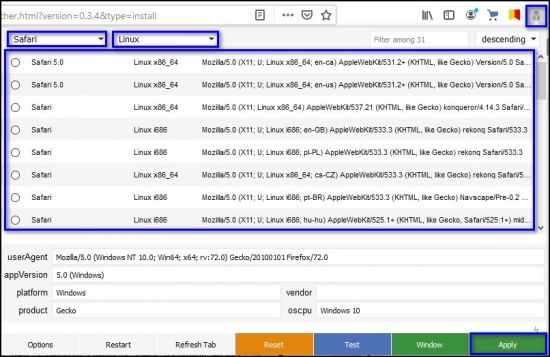
В нижней части окна видна информация о настоящей операционной системе и версии веб-обозревателя. После того как будут выполнены перечисленные выше действия, эти сведения изменятся на выбранные пользователем.
Убедиться, что расширение работает, можно, открыв Яндекс.Интернетометр. Этот сервис указывает IP-адрес пользователя, а также операционную систему, установленную на ПК и браузер, с которого выполнен выход в Сеть.
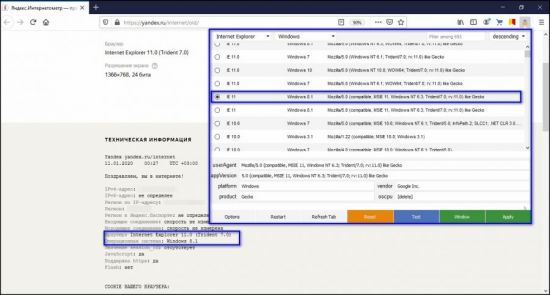
В User Agent Switcher представлен широкий выбор браузеров для замены настоящего. Среди них Internet Explorer, Chrome, Opera, Edge, Safari и другие десктопные и мобильные версии программ для серфинга в интернете. В числе операционных систем, которыми можно подменить оригинальную, представлены Windows, Linux, Mac OS, Android, а также другие платформы.
Дополнение позволяет настроить черные и белые списки. В первые включают сайты, для которых подмена браузера и ОС не применяются, во вторые – сайты, для которых данные в обязательном порядке будут изменены.
Расширение эффективно для решения разных задач. Обычно оно применяется для доступа к сайтам, корректно работающим только в определенном браузере. Также аддон популярен среди пользователей, которые создают несколько аккаунтов на одном сайте. Чтобы их не раскрыли, они меняют информацию о браузере и ОС и остаются незамеченными. Часто используют дополнение веб-разработчики, чтобы проверить, как страницы отображаются в разных браузерах и на различных устройствах.
The compatibility table in this page is generated from structured data. If you’d like to contribute to the data, please check out https://github.com/mdn/browser-compat-data and send us a pull request.
Update compatibility data on GitHub
| Chrome | Edge | Firefox | Internet Explorer | Opera | Safari | Android webview | Chrome for Android | Firefox for Android | Opera for Android | Safari on iOS | Samsung Internet | |
|---|---|---|---|---|---|---|---|---|---|---|---|---|
|
Chrome Full support Yes |
Edge Full support 12 |
Firefox Full support Yes |
IE Full support Yes |
Opera Full support Yes |
Safari Full support Yes |
WebView Android Full support Yes |
Chrome Android Full support Yes |
Firefox Android Full support Yes |
Opera Android Full support Yes |
Safari iOS Full support Yes |
Samsung Internet Android Full support Yes |
Для чего может понадобится изменить User-Agent
- Разработчики и администраторы веб-сайтов могут оценить достаточно ли оптимизирован их ресурс для разных обозревателей и устройств;
- В случаях, когда необходимо «обмануть» тот или иной сайт, чтобы получить доступ к содержимому, предназначенному для другой платформы или устройства (так как в зависимости от «юзерагент» одна и та же интернет-страница может предлагать разный контент);
- Вообще, User-Agent позволяет определить довольно много различных параметров: название интернет-обозревателя и его версию, движок рендеринга, операционную систему и её разрядность, язык интерфейса, разрешение экрана, тип устройства, IP, и многое другое. Поэтому подмену User Agent можно рассматривать и как одну из мер обеспечения конфиденциальности пользователя в Сети.
Инструкция
Служба поддержки браузера Мозилла предлагает пользователям сделать сброс строки кода до «заводского» параметра. Для этого нужно:
- В поисковой строке ввести about:config, согласиться с риском лишения лицензии этой копии приложения.
- В открывшемся окне сформировать запрос по слову useragent.
- Выделить каждый измененный параметр, вызвать ПКМ диалоговое подменю и выбрать пункт «Сбросить».
Также потребуется очистить историю посещений и куки.
Приведенный выше способ далеко не единственный, поэтому двигаемся дальше. Для удобства восприятия разобьем дальнейшее повествование на несколько логических блоков.
Изменение в настройках Firefox
Для коррекции буквенно-числовой последовательности нужно выполнить несколько шагов инструкции, представленной ниже:
Формируем поисковый запрос по фразе about:config, принимаем во внимание риск лишения лицензии этой копии браузера.
Затем в пустое поле вводим general.useragent.overridepreference.
Если результаты отрицательные, то самостоятельно создаем этот параметр.
Вызываем диалоговое окно нажатием ПКМ, затем – «Создать» и «Строка».
Называем его аналогично поисковому запросу, а значение даем ему из перечня UA, представленного на сайте http://www.useragentstring.com/index.php.
Измененный параметр активен до момента внесения новых правок или его полного удаления, продолжает работу после перезагрузки или выключения Firefox.
Используем расширения
Эта процедура экономит уйму времени и не уступает по эффективности методам, описанным выше. Рассмотрим особенности работы с дополнениями на примере User-Agent Switcher:
- Открываем эту ссылку https://addons.mozilla.org/ru/firefox/addon/uaswitcher/?src=search.
- Кликаем на кнопку «Добавить».
- Инструментарий становится доступным в виде иконки в правом верхнем углу экрана.
- Нажатие на ярлык вызывает выпадающее меню, где можно выбрать приемлемый вариант.
Расширение недавно получило глобальное обновление, так как функционал устарел и не был заточен под новые версии Mozilla Firefox.

